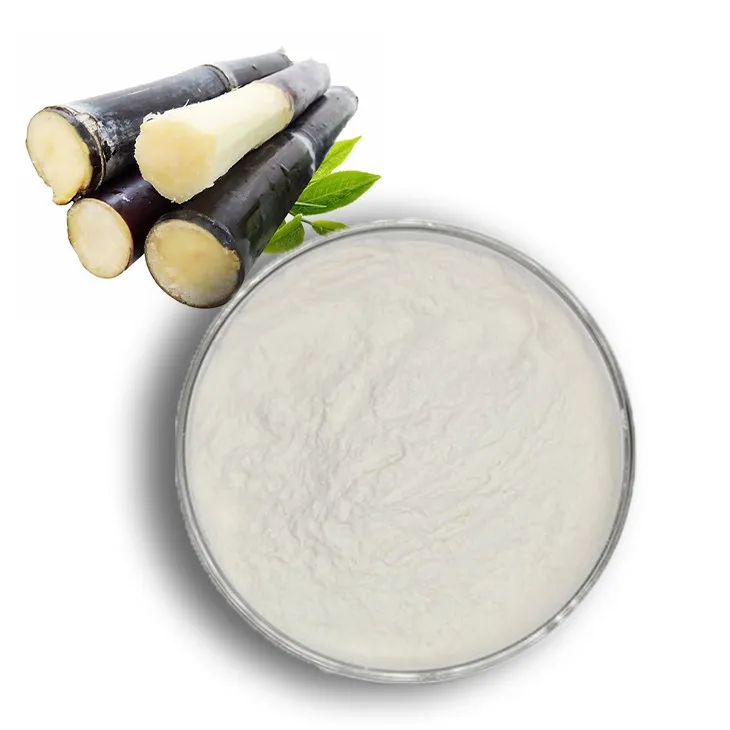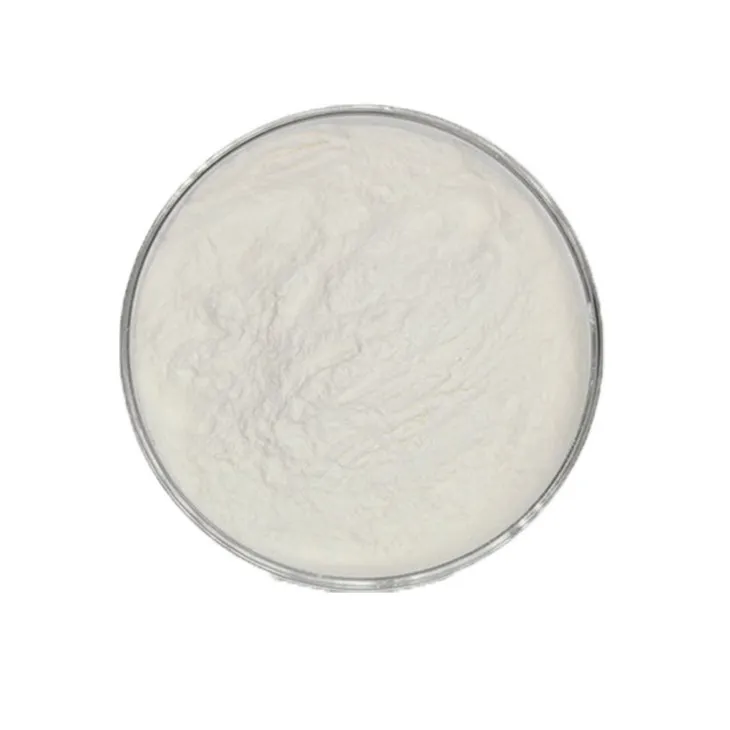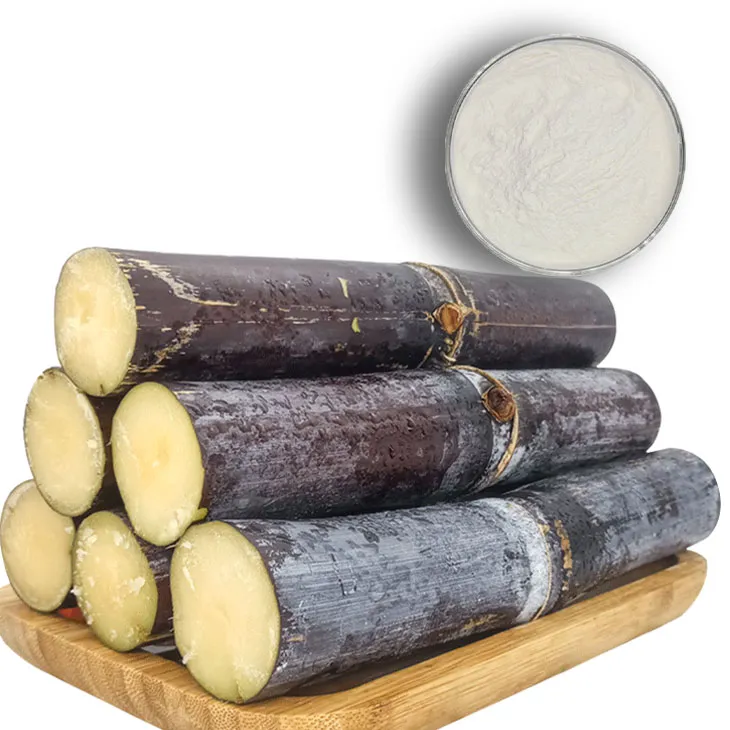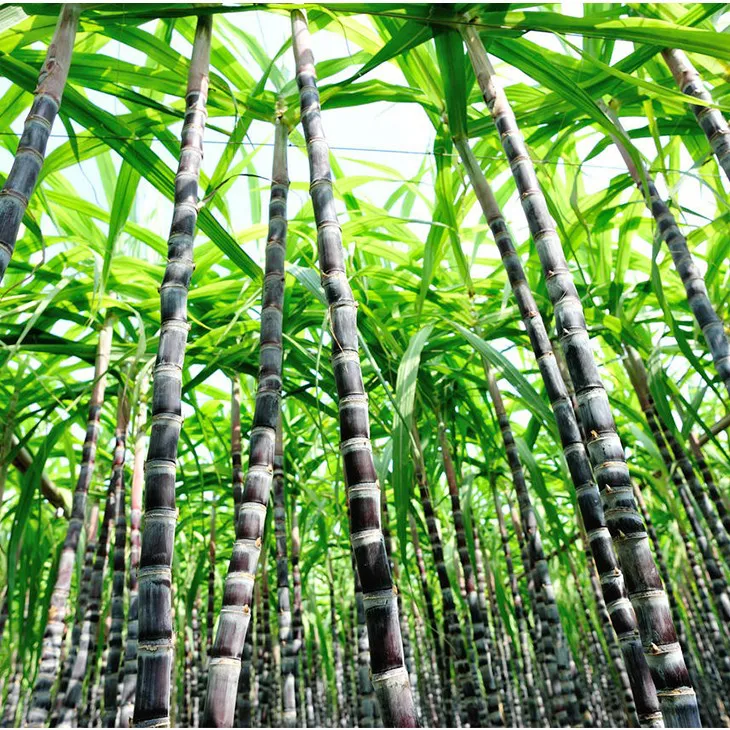- 0086-571-85302990
- sales@greenskybio.com
Extraction technology and production process of sugarcane extracts.
2024-11-30

1. Introduction
Sugarcane is one of the most important cash crops globally, and Sugarcane Extracts have found extensive applications in a wide range of industries. These extracts are rich in sucrose, as well as other valuable components such as flavonoids, phenolic acids, and amino acids. The extraction techniques and production processes of Sugarcane Extracts are of great significance in obtaining high - quality products for various end - uses.

2. Extraction Techniques
2.1 Mechanical Pressing
Mechanical pressing is one of the most traditional and widely used methods for extracting sugarcane juice, which is the primary form of Sugarcane Extract.
- The process begins with harvesting mature sugarcane stalks. These stalks are then cut into appropriate lengths for further processing.
- Next, the sugarcane is passed through a series of rollers in the press. The rollers exert high pressure on the sugarcane, crushing it and squeezing out the juice. This mechanical action helps to rupture the cells of the sugarcane, allowing the juice to be released.
- One of the main advantages of mechanical pressing is its simplicity and relatively low cost. It does not require the use of complex chemical solvents, making it a more natural extraction method. Moreover, it can be carried out on a large - scale in sugar mills.
- However, mechanical pressing also has some limitations. The extraction efficiency may not be as high as some other methods, and a certain amount of juice may still remain in the pressed residue. Additionally, the quality of the juice obtained may be affected by factors such as the freshness of the sugarcane and the pressure applied during pressing.
2.2 Solvent Extraction
Solvent extraction is another important technique for obtaining sugarcane extracts.
- First, a suitable solvent needs to be selected. Commonly used solvents include water, ethanol, and their mixtures. Water is a very common solvent as it can dissolve many of the components in sugarcane, such as sucrose and some water - soluble nutrients.
- The sugarcane material, which can be in the form of crushed stalks or even dried and powdered sugarcane, is mixed with the solvent. This mixture is then stirred or agitated to ensure good contact between the solvent and the sugarcane components.
- After a certain period of extraction time, the mixture is filtered to separate the solvent - containing extract from the solid residue. The filtrate contains the sugarcane extract dissolved in the solvent.
- The advantage of solvent extraction is that it can achieve a relatively high extraction efficiency, especially for some components that are not easily extracted by mechanical pressing. For example, certain bioactive compounds like flavonoids may be more effectively extracted using solvents.
- On the other hand, solvent extraction also has some drawbacks. The use of solvents requires careful handling to ensure safety, as some solvents may be flammable or toxic. Also, the subsequent removal of the solvent from the extract can be a complex and energy - consuming process, especially when using organic solvents.

3. Production Processes
3.1 Purification
Purification is a crucial step in the production of sugarcane extracts, especially when the final product is intended for food, pharmaceutical, or high - quality industrial applications.
- For the juice obtained from mechanical pressing or solvent extraction, the first step in purification is often filtration. This helps to remove large particles such as pieces of sugarcane fiber, soil, and other debris. Simple filtration methods such as using filter cloth or screens can be employed at the initial stage.
- After filtration, the juice may still contain impurities such as proteins, gums, and some inorganic salts. One common purification method is precipitation. For example, by adjusting the pH of the juice, certain proteins can be made to precipitate out. Lime (calcium hydroxide) is sometimes added to the juice for this purpose. The precipitated substances can then be removed by further filtration or centrifugation.
- Another important purification technique is ion - exchange chromatography. This method is particularly useful for removing ions such as calcium, magnesium, and potassium from the extract. Ion - exchange resins are used, which can selectively adsorb and exchange ions in the juice, resulting in a purer extract.
- Enzymatic treatment can also be applied in purification. Enzymes such as pectinase can be added to break down pectin in the juice, which helps to improve the clarity and filterability of the extract. This also aids in the removal of some impurities associated with pectin.
3.2 Concentration
Concentration is often necessary to increase the sucrose content or the concentration of other valuable components in the sugarcane extract.
- One of the most common methods for concentration is evaporation. This can be achieved through the use of heat - driven evaporators. In a simple evaporator, the sugarcane extract is heated, and the water in it is evaporated off. As the water is removed, the concentration of the remaining components increases. However, care must be taken during evaporation to avoid over - heating, which may cause degradation of some heat - sensitive components in the extract.
- Vacuum evaporation is a more advanced and widely used technique. By reducing the pressure in the evaporation system, the boiling point of the liquid is lowered. This allows for evaporation to occur at a lower temperature, which helps to preserve the quality of the extract. Vacuum evaporators are often used in large - scale sugarcane extract production facilities.
- Another method for concentration is reverse osmosis. In reverse osmosis, a semi - permeable membrane is used. Pressure is applied to the sugarcane extract on one side of the membrane, forcing water to pass through the membrane while retaining the larger solute molecules in the extract. This results in an increase in the concentration of the extract without the need for high - temperature evaporation.

4. Significance and Potential Applications
The extraction techniques and production processes of sugarcane extracts have great significance and a wide range of potential applications.
- In the food industry, purified and concentrated sugarcane extracts are used as sweeteners. Sucrose from sugarcane is a major source of sweetness in many food products, including baked goods, beverages, and confectionery. Additionally, the other components in the extract, such as flavonoids, may also have antioxidant and flavor - enhancing properties, which can be beneficial for food formulation.
- In the pharmaceutical industry, sugarcane extracts may contain bioactive compounds that can be used for medicinal purposes. For example, some phenolic acids in the extract may have anti - inflammatory or antimicrobial properties. The purified extracts can be further processed into pharmaceutical formulations such as tablets, capsules, or syrups.
- In the cosmetic industry, the antioxidant and moisturizing properties of sugarcane extracts can be utilized. Extracts can be incorporated into skin care products such as creams, lotions, and masks to help protect the skin from oxidative damage and improve skin hydration.
- Moreover, sugarcane extracts can also be used in the biofuel industry. The sucrose in the extract can be fermented to produce ethanol, which is a renewable biofuel. The extraction and production processes need to be optimized to ensure high - yield production of ethanol from sugarcane extracts.

5. Conclusion
In conclusion, the extraction techniques such as mechanical pressing and solvent extraction, along with the production processes including purification and concentration, play a vital role in the production of high - quality sugarcane extracts. These extracts have diverse applications in various industries, and continuous research and development in this area are essential to improve the extraction efficiency, product quality, and expand their potential applications further.
FAQ:
What are the main extraction techniques for sugarcane extracts?
The main extraction techniques for sugarcane extracts include mechanical pressing and solvent extraction. Mechanical pressing involves using machinery to squeeze out the juice from sugarcane. Solvent extraction utilizes appropriate solvents to extract the desired components from sugarcane.
How does mechanical pressing work in the extraction of sugarcane extracts?
Mechanical pressing works by applying pressure on sugarcane stalks. The sugarcane is first cut and prepared, and then it is passed through rollers or presses. The pressure exerted crushes the cells of the sugarcane, allowing the juice, which contains the sugarcane extracts, to be released.
What is the role of solvent extraction in obtaining sugarcane extracts?
Solvent extraction is useful for extracting specific components from sugarcane. Different solvents can be chosen based on the solubility of the target compounds. It can help to isolate certain substances that may not be easily obtained through mechanical pressing alone. The solvent is mixed with the sugarcane material, and then the desired extract is separated from the solvent through processes like evaporation or filtration.
What are the important steps in the purification process of sugarcane extracts?
In the purification process of sugarcane extracts, steps may include filtration to remove solid impurities, clarification to get rid of turbidity - often using substances like lime to precipitate impurities. Ion - exchange can also be used to remove unwanted ions. These steps help to ensure that the final sugarcane extract is of high quality and free from contaminants.
How is concentration carried out in the production of sugarcane extracts?
Concentration in the production of sugarcane extracts can be achieved through methods such as evaporation. Heat is applied to the sugarcane extract, which causes the water content to evaporate, leaving behind a more concentrated form of the extract. Another method could be reverse osmosis, where pressure is used to separate water from the extract components, resulting in concentration.
Related literature
- Advanced Sugarcane Extract Production Technologies"
- "Sugarcane Extracts: From Extraction to Industrial Applications"
- "Improving Sugarcane Extract Quality through Modern Extraction and Production Processes"
- ▶ Hesperidin
- ▶ Citrus Bioflavonoids
- ▶ Plant Extract
- ▶ lycopene
- ▶ Diosmin
- ▶ Grape seed extract
- ▶ Sea buckthorn Juice Powder
- ▶ Fruit Juice Powder
- ▶ Hops Extract
- ▶ Artichoke Extract
- ▶ Mushroom extract
- ▶ Astaxanthin
- ▶ Green Tea Extract
- ▶ Curcumin
- ▶ Horse Chestnut Extract
- ▶ Other Product
- ▶ Boswellia Serrata Extract
- ▶ Resveratrol
- ▶ Marigold Extract
- ▶ Grape Leaf Extract
- ▶ New Product
- ▶ Aminolevulinic acid
- ▶ Cranberry Extract
- ▶ Red Yeast Rice
- ▶ Red Wine Extract
-
Grape Leaf Extract
2024-11-30
-
Hawthorn Extract
2024-11-30
-
Red Vine Extract
2024-11-30
-
Bayberry Extract
2024-11-30
-
Diosmin
2024-11-30
-
Bilberry Extract
2024-11-30
-
Beetroot juice Powder
2024-11-30
-
Yellow Pine Extract
2024-11-30
-
Milk Thistle Extract
2024-11-30
-
Chasteberry Extract
2024-11-30





















